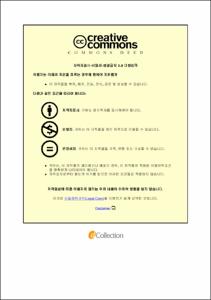요양원 노인의 행복에 관한 구조모형
- Issued Date
- 2019-08
- Abstract
- This study was performed to construct and validate a structural equation model of the nursing home elderly’s happiness. The hypothetical model was based on an integrated description model of happiness and the theoretical background. The major variables included the four variables: self-regulation, leisure activities, nursing home service satisfaction, and enjoyment. The data collection was done from 239 elderlies aged 65 or older, who have been hospitalized for more than six months at nursing homes located in one metropolitan city and one local government. The survey was done from March 12 to April 7, 2019. Ultimately, a total of 239 data was analyzed using SPSS / WIN 22.0 to examine subject characteristics, descriptive statistics of the major variables, multicollinearity, and correlation. AMOS 22.0 was used to validate confirmatory factor analysis, hypothesis fit, and research hypothesis. In the structural model, five out of seven pathways were adopted as statistically significant and that five out of seven research hypotheses was identified to have direct and indirect effects. The statistically significant variables for the happiness of the elderly at nursing homes were represented with nursing home service satisfaction, enjoyment and leisure activities. Of the three, variables with nursing home service satisfaction was the highest, followed by enjoyment and leisure activities with their explanation level of 60.1%. The statistically significant variables for the enjoyment of nursing homes included leisure activities and nursing home service satisfaction. In conclusion, it has been shown that for the nursing home elderly’s happiness the service satisfaction of nursing homes and leisure activities were vital with enjoyment enforced by experiencing happy moments. Therefore, it required to take these three variables into consideration. when seeking promotion ways and mediating strategies for the happiness of the nursing home elderly.
본 연구의 목적은 요양원 노인의 행복에 관한 모델을 구축하고 검증하는 것이다. 본 연구의 가설적 모델은 행복에 대한 통합적 설명모델과 이론적 배경을 토대로 하였다. 본 연구의 주요변수는 자기조절, 여가활동, 요양원 서비스만족도 및 즐거움이었다. 자료수집은 일개 광역시와 일개 지자체 소재의 요양원에서 6개월 이상 입소한 자로 65세 이상의 노인 총 239명을 최종 연구대상으로 하였다. 설문기간은 2019년 3월 12일부터 4월 7일까지였다. 자료분석은 SPSS/WIN 22.0을 이용하여 대상자의 특성, 주요변수의 기술통계, 다중공선성, 상관관계를 분석하였고, AMOS 22.0을 이용하여 확인적 요인분석과 가설적 모형의 적합도 및 연구가설을 검증하였다. 구조모형의 검증 결과, 7개의 경로 중 5개의 경로가 통계적으로 유의하여 채택되었고, 7개의 연구가설 중 5개의 가설이 직, 간접효과로 유의하여 지지되었다. 요양원 노인의 행복에 통계적으로 유의한 변수는 요양원 서비스만족도, 즐거움, 여가활동이었다. 그 중 요양원 서비스만족도가 가장 높았고 다음으로 즐거움, 여가활동 순으로 나타났으며, 행복에 대한 설명력은 60.1%였다. 요양원 노인의 즐거움에 통계적으로 유의한 변수는 여가활동과 요양원 서비스만족도였다. 결론적으로, 요양원 노인의 행복을 위해서는 요양원 서비스만족도, 여가활동이 중요하며, 즐거움은 기쁜 순간들을 경험할수록 더 행복할 것으로 나타났다. 그러므로 요양원 노인의 행복을 증진시키기 위한 방안과 중재 전략을 모색하고자 할 때 이러한 변수들을 고려하는 것이 중요하다고 사료된다.
- Alternative Title
- A Structural Equation Model of the Nursing Home Elderly’s Happiness
- Awarded Date
- 2019-08
- Degree
- 박사
- Citation
- 최동숙. (201908). 요양원 노인의 행복에 관한 구조모형.
- Type
- Thesis
- Source
- http://dcollection.kmu.ac.kr/common/orgView/000000118064
- Appears in Collections:
- 2. College of Nursing (간호대학) > 박사
- 파일 목록
-
-
Download
 THESIS-Nursing-2019-033.pdf
기타 데이터 / 1.44 MB / Adobe PDF
THESIS-Nursing-2019-033.pdf
기타 데이터 / 1.44 MB / Adobe PDF
-
Items in Repository are protected by copyright, with all rights reserved, unless otherwise indicated.